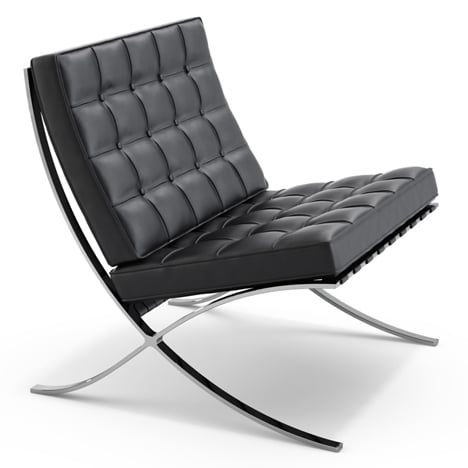
Dezeen's A-Zdvent calendar: Barcelona Chair by Mies van der Rohe
Second in our A-Zdvent calendar this year is the Barcelona Chair by Modernist architect Mies van der Rohe.
The German architect designed the chair in collaboration with his long-term partner and fellow architect Lilly Reich, who taught interior and furniture design at the Bauhaus during Rohe's time as head of the art school.
The first version of the chair was created to inhabit the German Pavilion for the International Exposition in Barcelona, Spain, in 1929, also designed by Rohe. It was demolished at the end of the fair, but rebuilt on the same site in the Catalan capital in the 1980s.
The pavilion's brief was to provide a space to welcome the Spanish king and queen and the form for the Barcelona Chair grew out of Rohe and Reich's designs for white-kid upholstered thrones.
American furniture brand Knoll began manufacturing a licensed version of the chair in 1947, which it described as an "icon of the modern movement".
Both the structure and the furniture designed for its interior have remained popular influences for architects and designers, and the Barcelona chair has become one of the most recognised – and copied – pieces of Modernist furniture from the 20th century.
It was described as "the chair of the century" by Rohe's biographer Franz Schultz, who called it the architect's greatest work.
The chair's mirror-polished chrome frame was initially designed to be bolted together, but was redeveloped in 1950 to use stainless steel that allowed the frame to be formed from a seamless piece of metal.
Upholstered in cow hide, the surface of the seat and back is covered with 40 individual pieces of leather. Matching leather straps are used to support the foam cushions.